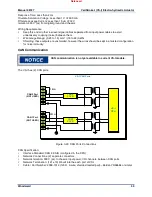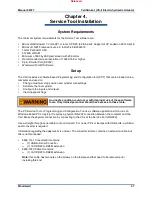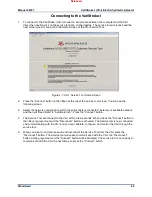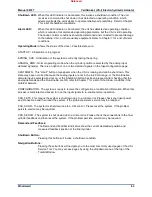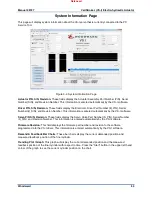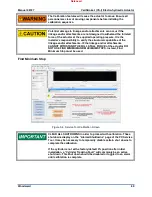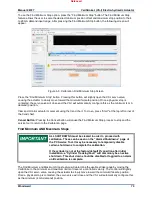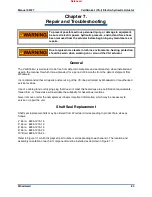
Manual 26727
VariStroke-I (VS-I) Electro-hydraulic Actuator
Woodward
68
Failure to input the correct Supply Pressure can result in unstable
actuator performance. Ensure that this setting is correct and that the
system pressure regulators do not allow more than a ±10% variation
in Supply Pressure.
Stability: Certain combinations of Supply Pressure and Cylinder
Volume can cause the actuator to operate at reduced performance.
See Chapter 2: Performance Index for more information on this Alarm.
Slew rates:
•
Manual Slew Rate:
This adjustment allows the user to limit the slew rate when in Manual Operation.
Consider lowering this value if the attached linkage and valve are not robust.
•
Operational Slew Limit:
This adjustment allows the user to limit the slew rate when in Normal
Operation. Consider lowering this value if the linkage and valve attached are not robust. Also,
consider using the Soft Seating to lower valve seating velocities.
The Soft Seating feature will not function in some shut down
conditions. Loss of cylinder position feedback, loss of electrical
power, or an internal electronics fault will result in loss of the Soft
Seating functionality.
Soft seating
: The VS-I Soft Seating function allows the actuator to have a different slew rate limit when
positioned within the lower 0% to 25% of the user-calibrated stroke. This feature provides a behavior
similar to that of a conventional hydraulic cushion. You may use this function to limit the steam valve
seating velocity in order to lengthen the life of the valve.
•
Slow Zone Edge: This adjustment sets the position at which the actuator slew rate limit will switch
from the Operation Slew Rate Limit to the Slow Zone Velocity.
•
Slow Zone Velocity: This adjustment sets the slew rate limit of the actuator when position below the
Slow Zone Edge value. Consider lowering this value if valve-seating velocities are higher than
desired.
Incorrect Slew Rate Limits and Soft Seating adjustments can result in
high seating velocities that may damage equipment.
Configuration of the Slow Zone settings and Slew Rate Limits can
result in excessively slow closing speeds.
The engine, turbine, or other type of prime mover should be equipped
with an overspeed shut down device to protect against runaway or
damage to the prime mover with possible personal injury, loss of life,
or property damage.
Step 2—Calibration
To calibrate, start by pressing the Calibrate button (Step 2). Upon pressing the Calibrate button, there are
two options available on the left side of the page: “Find Minimum Stop” and ”Find Minimum AND
Maximum Stop” (see screens and details below). Select one of these options and run before any further
configuration can take place.
Released


